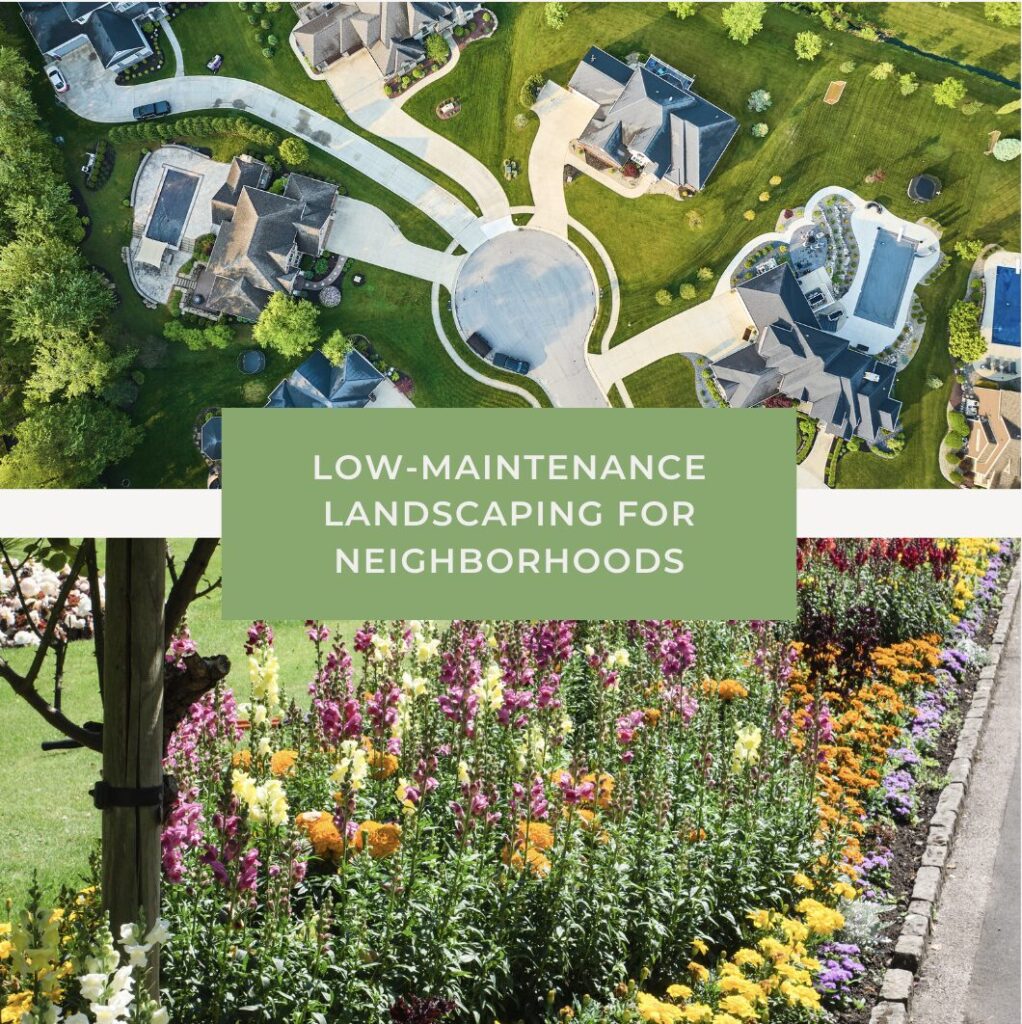
Low-maintenance landscaping for a homeowners association (HOA) is a great way to keep the neighborhood looking tidy without requiring constant upkeep.
Here are our suggestions:
Native Plants:
Choose plants that are native to your region as they are well-adapted to the local climate and soil conditions, requiring less water and maintenance.
Drought-Tolerant Plants:
Opt for plants that are drought-resistant to reduce the need for frequent watering. Succulents, ornamental grasses, and Mediterranean plants are excellent choices.
Mulching:
Apply a layer of mulch around plants to suppress weeds, retain moisture in the soil, and regulate soil temperature. Organic mulches like wood chips or bark also enrich the soil as they decompose.
Automatic Irrigation System:
Install a drip irrigation system with a timer to water plants efficiently. Drip irrigation delivers water directly to the roots, minimizing water waste and reducing the frequency of watering.
Low-Maintenance Turf Alternatives:
If you have grassy areas, consider replacing traditional turf with low-maintenance alternatives such as artificial turf, ground cover plants, or eco-friendly grass mixes that require less mowing and fertilization.
Group Plants by Water Needs:
Arrange plants with similar water requirements together to ensure efficient watering practices. This prevents overwatering or underwatering certain plants.
Rock Gardens:
Incorporate rock gardens and gravel walkways into the landscape design. These features require minimal maintenance and add visual interest to the surroundings.
Regular Maintenance Schedule:
Even low-maintenance landscapes require some upkeep. Establish a regular maintenance schedule for tasks such as pruning, weeding, and fertilizing to keep the landscape looking its best with minimal effort.
Educate Residents:
Provide residents with information about the benefits of low-maintenance landscaping and encourage them to adopt sustainable gardening practices in their own yards. This can help create a cohesive aesthetic throughout the community while reducing overall maintenance needs.
